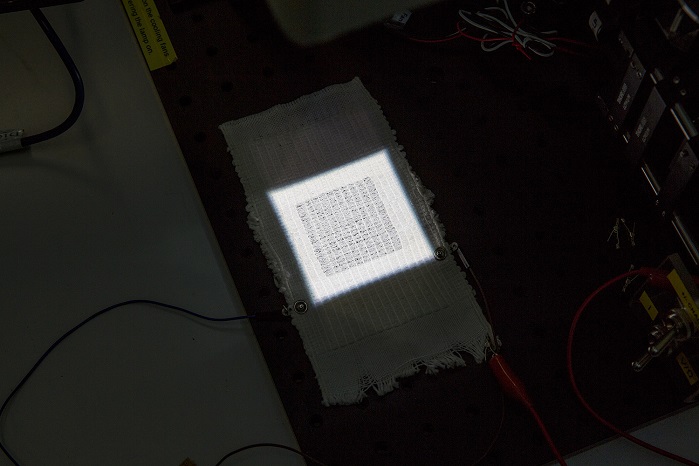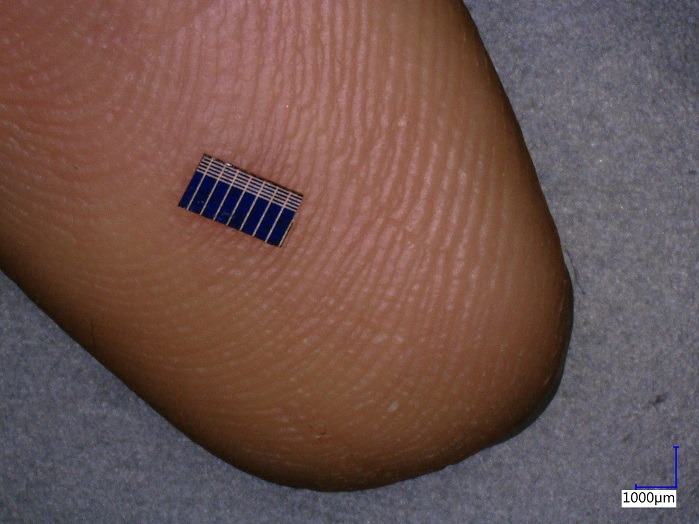
HyRECM for lighter mobile phones
Clothing embedded with tiny solar cells the size of a flea can allow wearers to generate electricity on the move.

17th December 2018
Innovation in Textiles
|
Nottingham
Clothing embedded with tiny solar cells the size of a flea can allow wearers to generate electricity on the move and charge items like mobile phones and smartwatches, according to the Nottingham Trent University, which has developed a way to embed miniaturised solar cells into yarn that can then be knitted and woven into textiles.
The technology has been tested and proven to charge a mobile phone and a Fitbit. The cells are encapsulated in a resin which allows the textile fabric to be washed and worn like any other form of clothing.
Measuring only three millimetres in length and 1.5 millimetres in width, the cells are almost invisible to the naked eye and cannot be felt by the wearer. For all intents and purposes, garments appear exactly the same as any other form of clothing despite having the capability to generate electricity.
“By embedding miniaturised solar cells into yarn, we can create clothing and fabric that generate power in a sustainable way,” said project lead Professor Tilak Dias, of the School of Art & Design. “The clothing would look and behave like any other textile, but within the fibres would be a network of miniaturised cells which are creating electricity.”

“This could do away with the need to plug items into wall sockets and reduce the demand on the grid while cutting carbon emissions. The electrical power demand for smart e-textiles has always been its Achilles heel and this technology will allow people to use smart textiles while on the move.”
Up to 200 miniaturised cells can generate 2.5-10 volts and up to 80 miliwatts in power. The university’s Advanced Textiles Research Group made a proof of concept textile of 5cm by 5cm size with 200 cells.

This proved powerful enough to charge a mobile phone and a Fitbit, according to the researchers. They say if 2,000 solar cells were incorporated into a textile, it would generate enough power to charge a smart phone. “This is an exciting technology which could revolutionise the way we think about solar power, clothing and wearable technology,” commented researcher Achala Satharasinghe, who developed the prototype as part of his PhD at the university.
“With the availability of miniaturised solar cells, we can generate power in a range of new ways, by utilising things like clothing, fashion accessories, textiles and more. It will allow mobile devices to be charged in environmentally-friendly ways which are more convenient for consumers than ever before.”

Business intelligence for the fibre, textiles and apparel industries: technologies, innovations, markets, investments, trade policy, sourcing, strategy...
Find out more